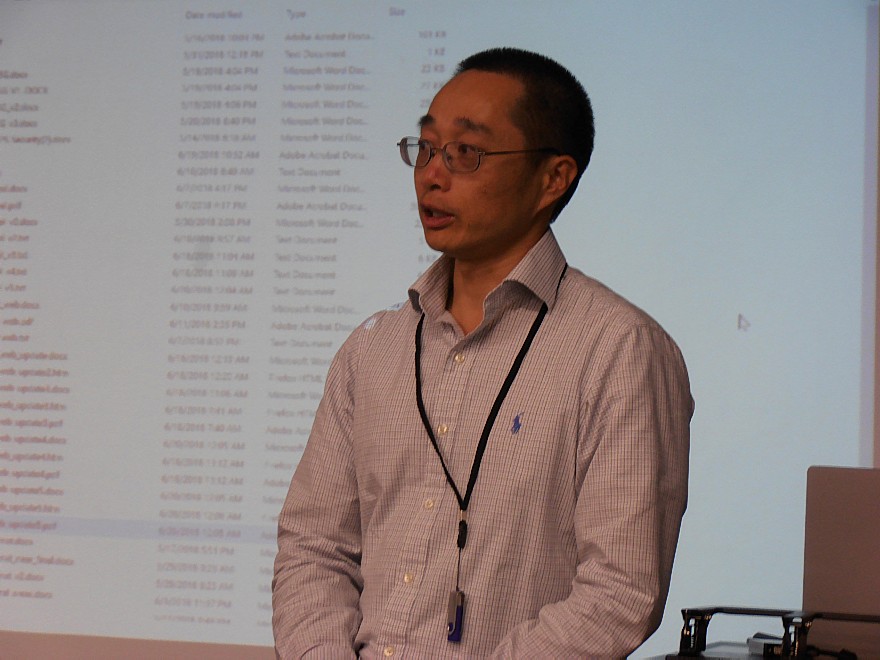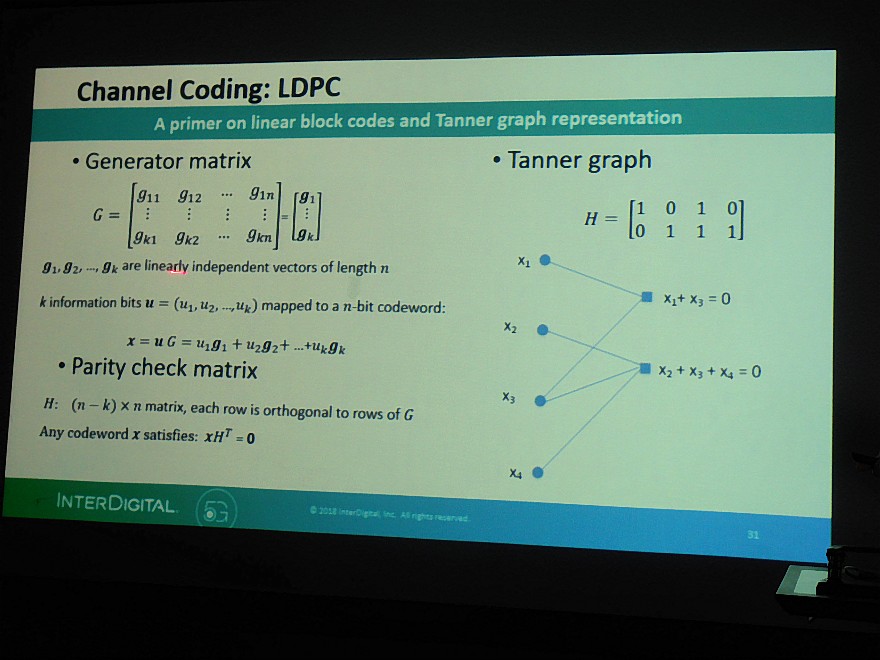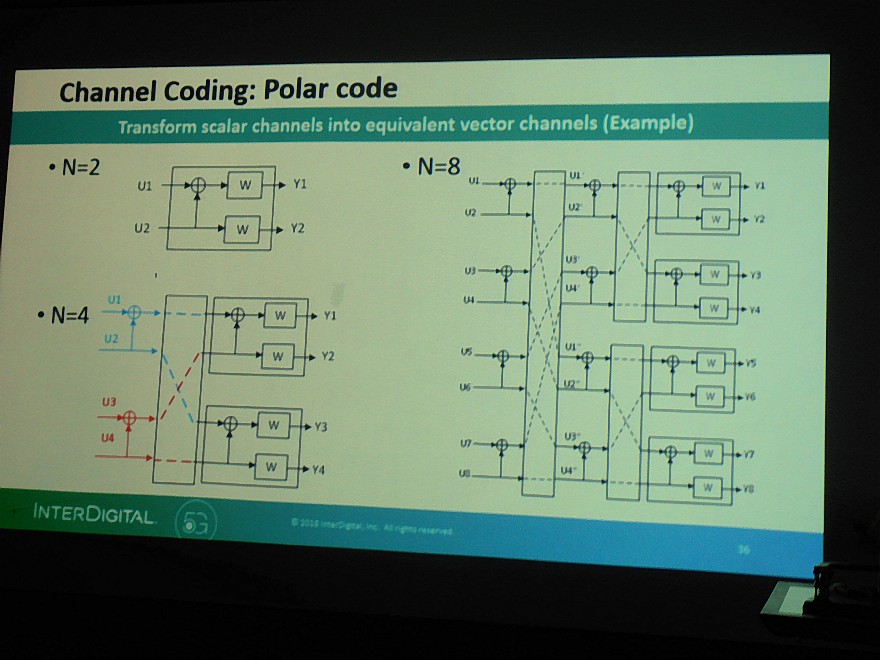IEEE FOOTHILL COMSOC–MOVING FROM 4G TO 5G—JUNE 27, 2018 TALK
| August 22, 2018 | Posted by Frank Gomez under COMSOC, General |
Comments off
|
On June 27, 2018 the IEEE COMSOC Chapter of the IEEE Foothill Section hosted Dr Liangping Ma from the IEEE San Diego Section at DeVry University. Pomona.
The topic was “WHAT IS NEW AS WE MOVE FROM 4G TO 5G”. The earlier announcement stated that the topic would be “NEW WIRELESS TECHNOLOGY SYSTEM GROWTH : WHAT IS NEW AS WE MOVE FROM THE 4G DEPLOYED SYSTEMS TO A 5G SYSTEM”. Dr Ma decided that he would limit his talk to just a few of the new developments that are occurring in this complex technical field. A good approach and limit to the extensive 5G possible topics that could be covered this evening; this was appreciated by our IEEE Foothill members.
It was pointed out that 5G is an international effort, with activities happening literally everywhere. IEEE COMSOC chapters around the world are involved.
The starting point for this presentation was noting that just the prior week the 5G RAN (Radio Access Network) organizing committee affirmed the RAN specification for the Stand-Alone Radio in Release 15. The RAN technology will have an “agnostic” architecture so that multiple radio technologies can be used in a plug and play manner. Voice communications will be maintained by using IMS (IP-Multimedia Systems) and VoLTE (Voice over LTE). This committee decision will lead to initial 5G deployment later this year or in 2019. The various vendors will be working on their own schedules for these deployments.
To orient us to the different design goals and their different specifications, Dr Ma presented the basic triangle that is set up to illustrate the 5G Use Cases and the Key Requirements.
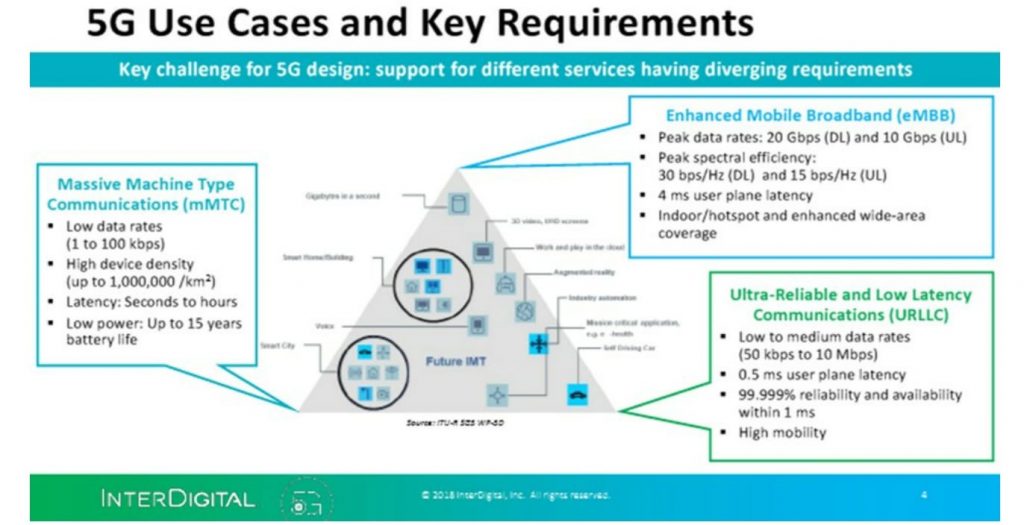
IEEE FH COMSOC 06/27/2018–THE BASIX THREE VERTEX TRIANGLE TO IS USED FOR HIGH-LEVEL SEPARATION FOR THE 5G SPECIFICATIONS
On one vertex of this triangle is eMBB (enhanced Mobile Broadband). Here there are peak data rates are 20Gbps (on DownLink DL) and 10Gbps (on UpLink UL) specified. This is needed for indoors and hot spots and enhanced wide area coverage.
The second vertex is labelled mMTC (Massive Machine Type Communications). Here there is much lower data rates (1 to 100Kbps). There will be also a much higher device (user equipment) density that would need to be serviced.
The final vertex is labelled uRLLC (Ultra Reliable and Low Latency Communications). Here there are low date rates, from 50Kbps to 10 Kbps. The specification calls for 0.5 msec user plane latency. The main point here is 99.999% reliability. (Let our IEEE Foothill members figure out how to test and verify that Use Case with the five-99999s reliability.)
Then we visited the topic of “Numerology”, another description for the waveforms and the modulation that will define the signal transmission. The modulation specified will be OFDM (Orthogonal Frequency Division Multiplexing). Now changes have been made from 3G and LTE; OFDM are used for both UL and DL in 5G. Also, CP-OFDM is used for better spectrum utilization. Dr Ma also explained how the subcarrier spacing scales with the BW bandwidth (15KHz *2N).
Onwards our discussion continued to the MIMO (Multiple Input and Multiple Output) antenna systems. For 5G, both air interfaces and core interfaces can evolve and scale independent of each other. MIMO will use multiple antenna beams to send and receive signal to the end user. Lots of independent parameters here, which will include attenuation, diffraction of the beams, interferences from the different transmitters and UE (User Equipment), the ever present noise, use of pilot signals to access signal quality, etc, that will require much analyses and actual-on-the- ground testing to design a working MIMO system. And what will happen when one provider’s equipment jams another vendors’equipment. No simple use case can capture all the tasks that a MIMO system would be required to do. Lots of data needed to figure out MIMO; a few PDF / PPTX charts is not even a start.
From here, our presentation gave a brief mention of a new study which began in February 2018. This is NOMA (Non-Orthogonal Multiple Access).If we transmit non-orthogonal signals, then can we design a receiver that could recover these non-orthogonal signals, and interpret each correctly and independently? A good question to ask. This effort will probably lead to extensive analyses of correlation and power levels per channel, plus careful handling of “noise” effects. This is a topic for our IEEE COMSOC members to stay tuned to.
The last part of Dr Ma’s presentation was used for discussions of both Channel coding—Data Channel and Channel Coding—Control Channel. For the Data Channel, the need for good BER (Bit Error Rates) pointed to quasi-cyclical LDPC (Low Density Parity Check) codes with a high degree of parallelism as a solution. These would be optimized for different regions of code base rates and code base sizes.
For the Control and Broadcast Channels, Polar Codes were investigated. These give good BER for small block sizes and error floor. Dr Ma took us through an exercise showing sub-block size with interleaving. Starting from a circular buffer, then use shortening, repetition and puncturing to select and use bits. Dr Ma exhibited some simple examples, with use of some MATLAB programs, to illustrate these coding concepts, and show what the resulting BER plots look like.
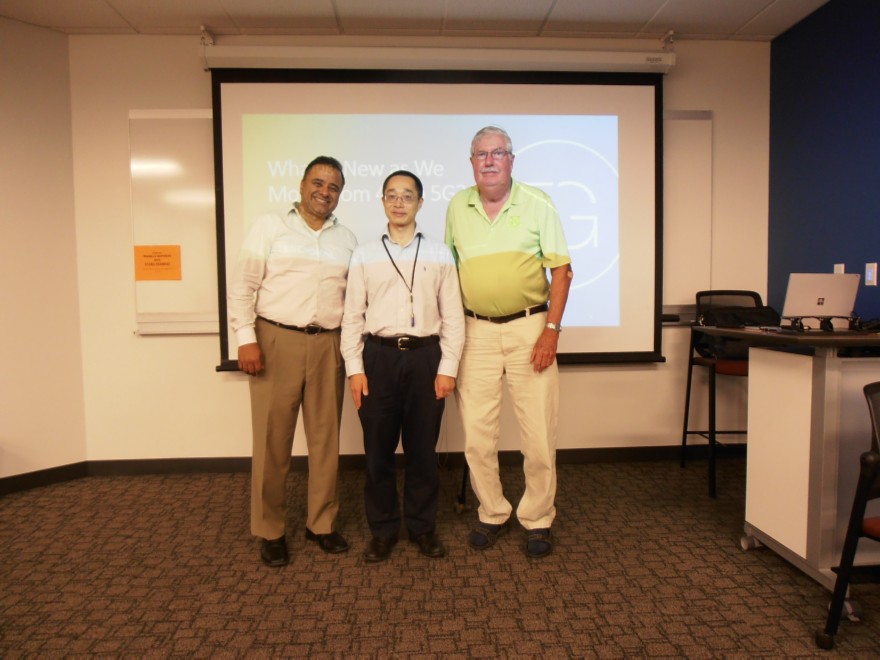
OUR IEEE SECTION CHAIR DAVID G, OUR COMSOC CHAIR FRANK F WITH LIANGPING MA,OUR DISTINGUISHED LECTURER
We thank our IEEE COMSOC Distinguished Lecturer for coming to our IEEE Foothill Chapter for an excellent evening’s talk.
